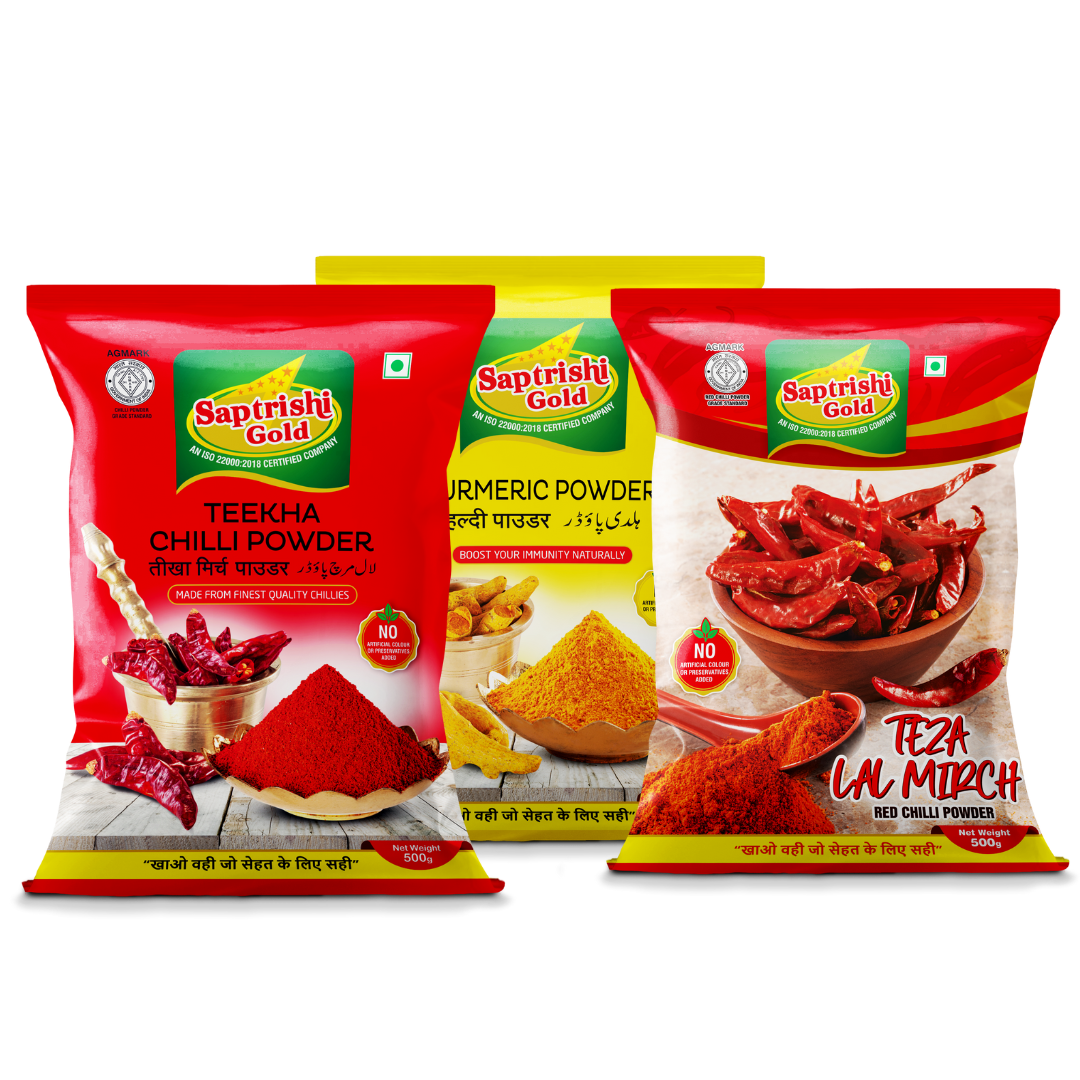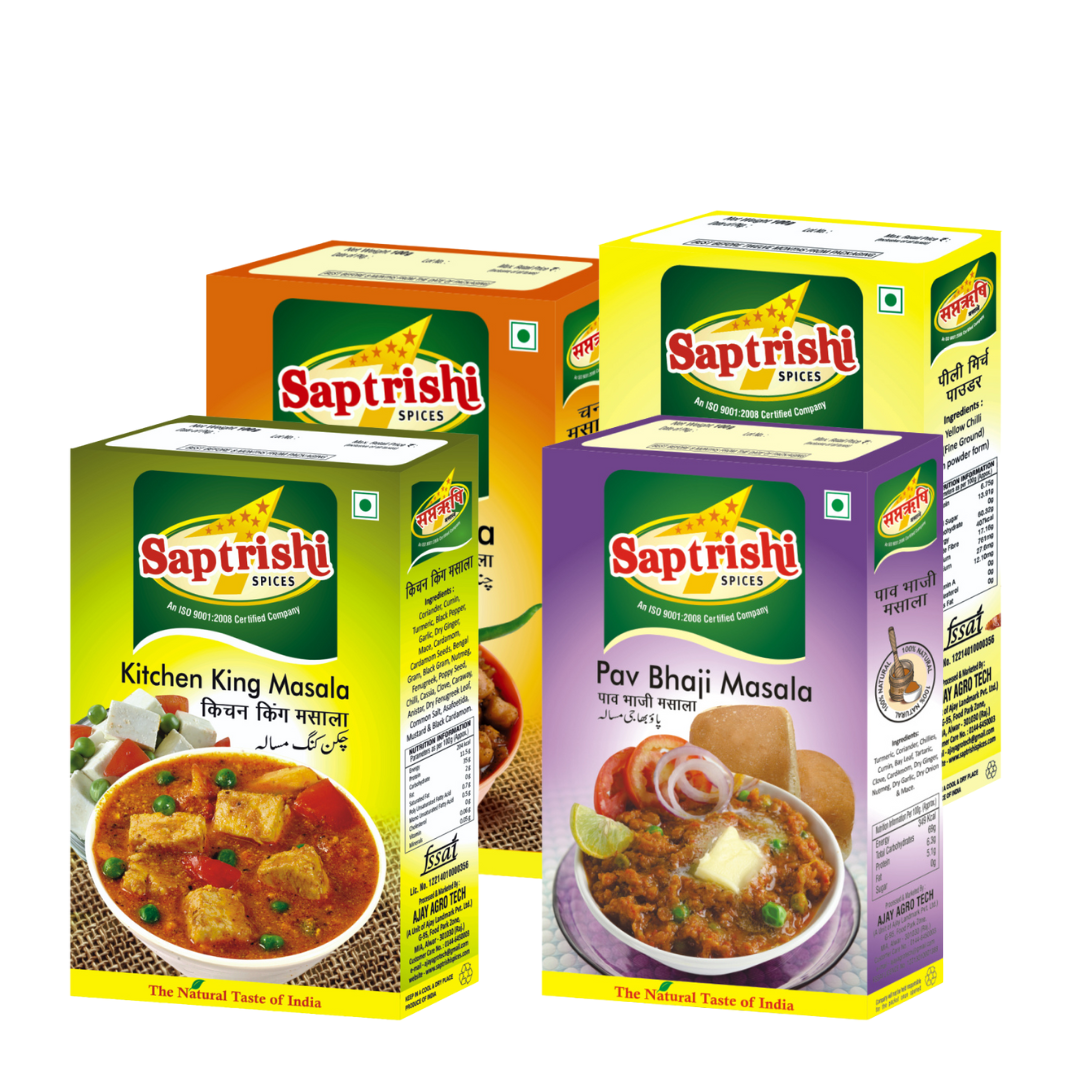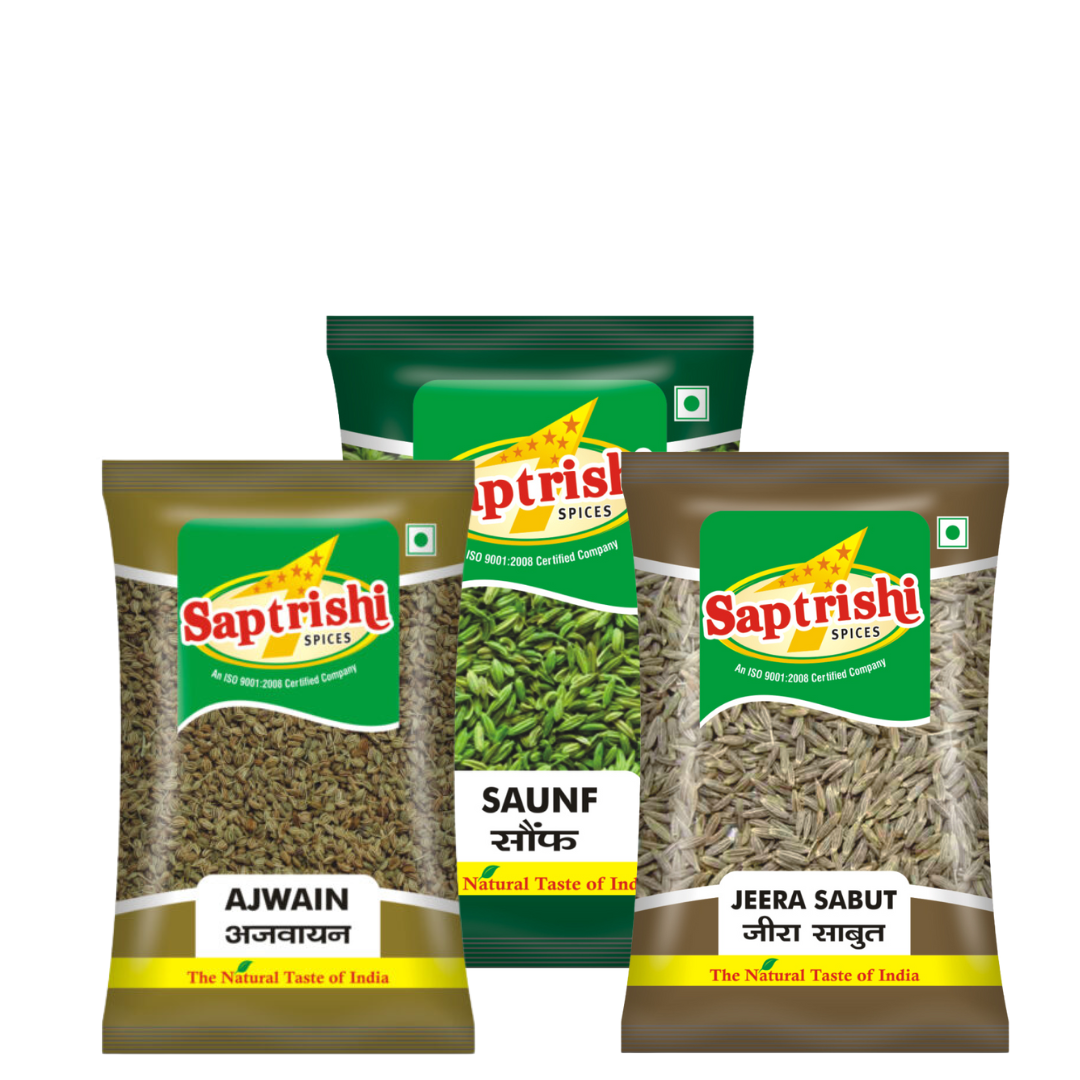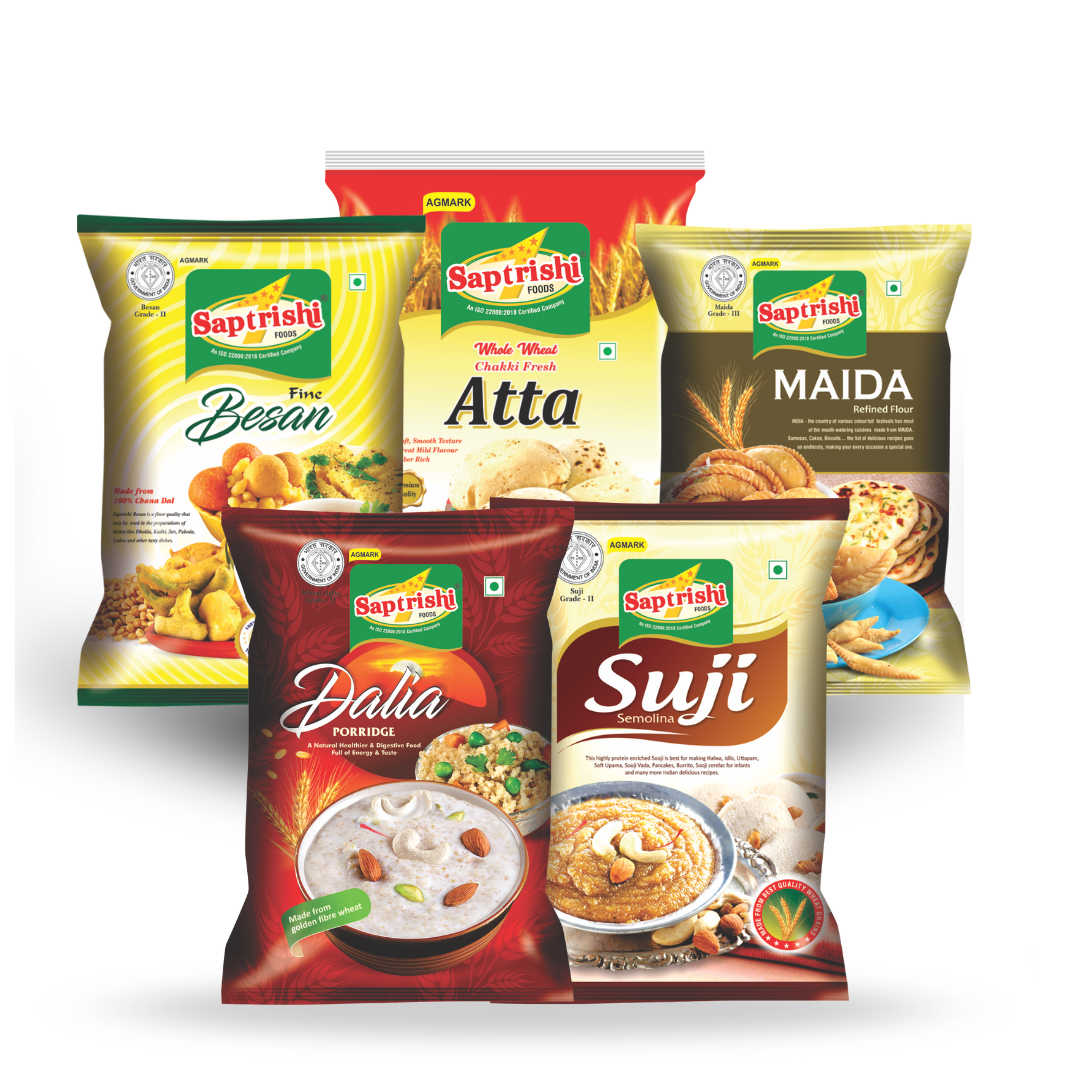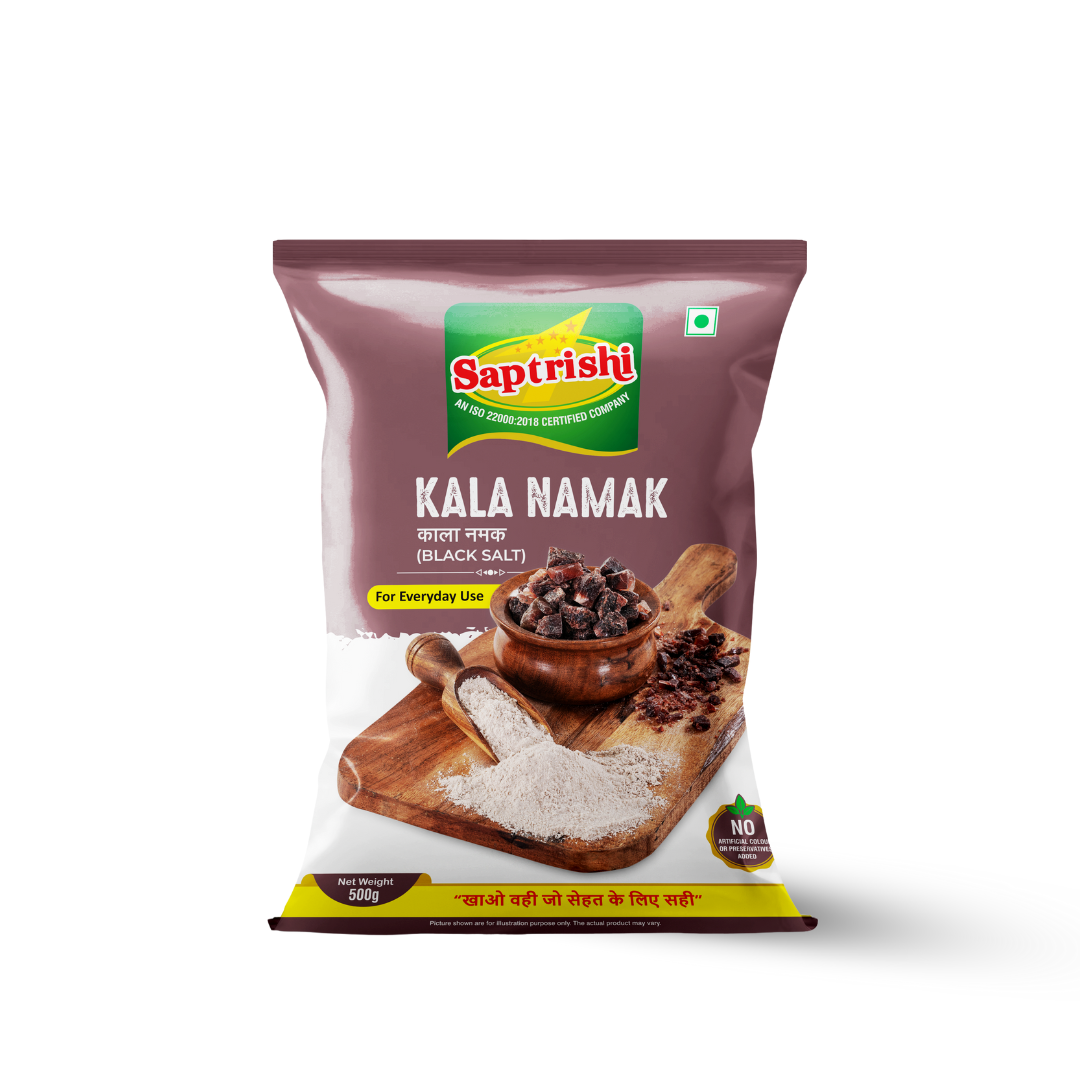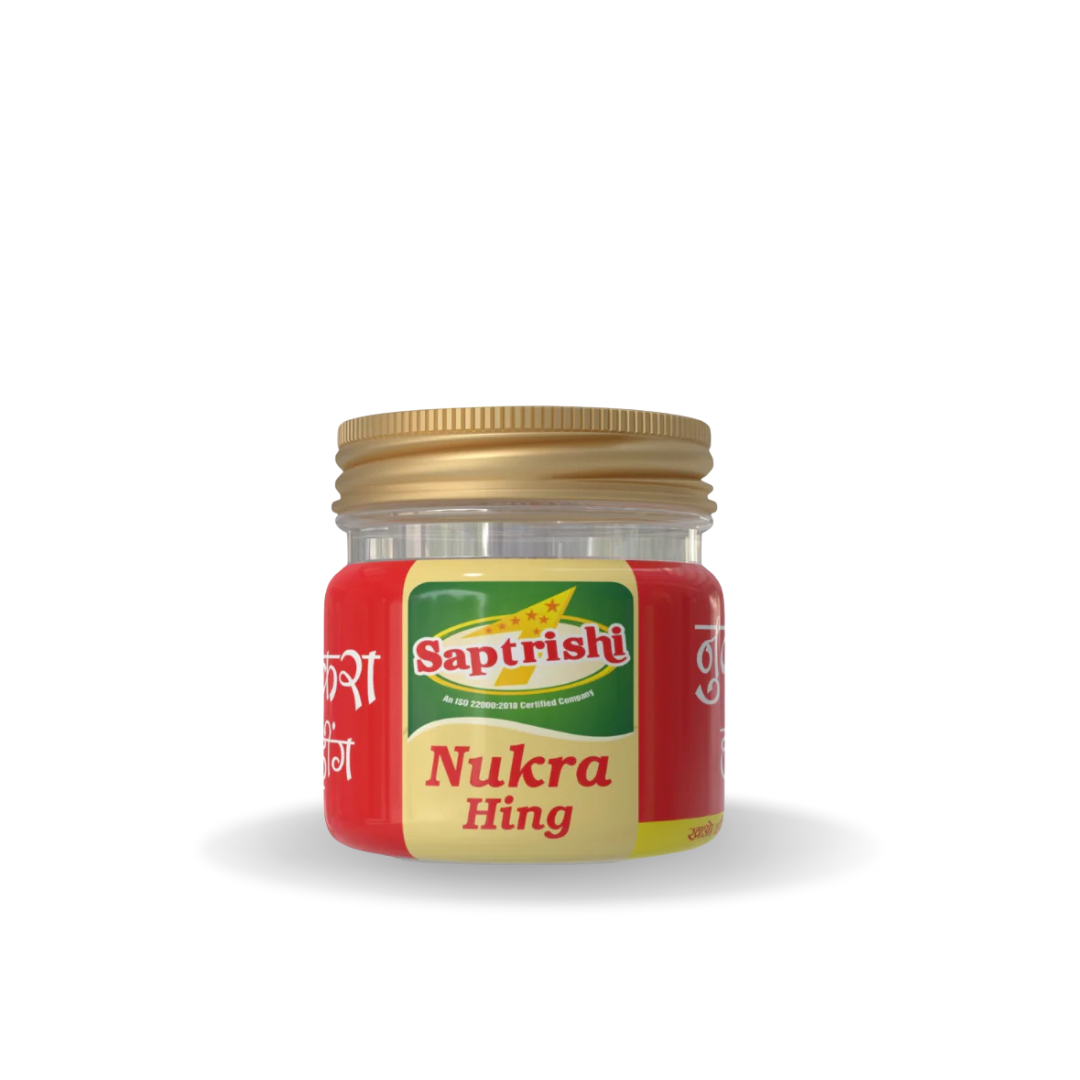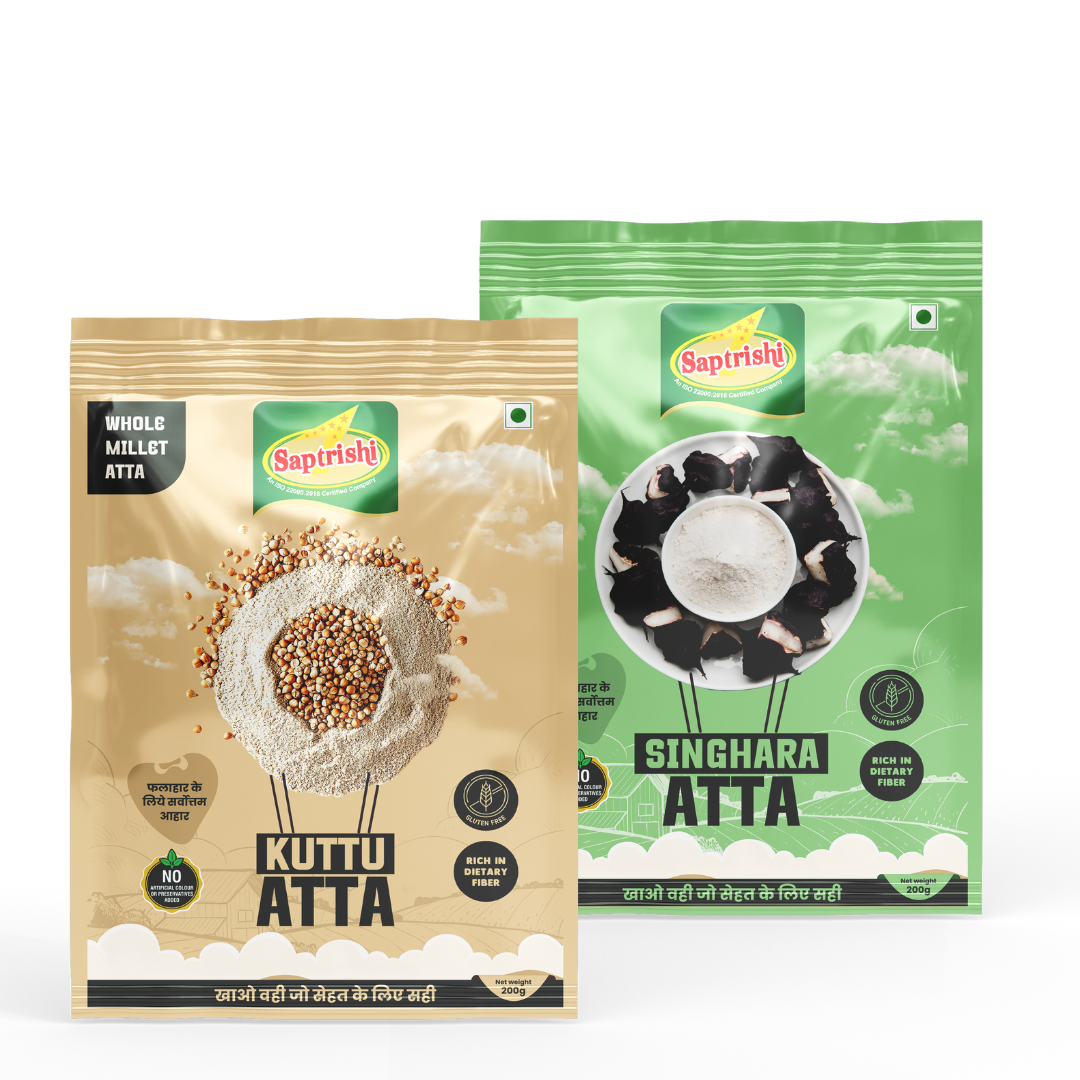In every Indian kitchen, the quest for perfectly flavored vegetable dishes leads to one essential ingredient — authentic Sabji Masala. This carefully crafted spice blend represents the perfect marriage of traditional wisdom and modern convenience, transforming ordinary vegetables into extraordinary everyday meals that nourish both body and soul.
Whether you're preparing quick weekday dinners or elaborate weekend feasts, understanding how to harness the full potential of Sabji Masala will revolutionize your approach to vegetable cooking. From simple dry stir-fries to rich, aromatic gravies, this versatile spice blend ensures every dish delivers consistent flavor, vibrant color, and the wholesome nutrition that makes home cooking so rewarding.
The Science Behind Perfect Sabji Masala
Sabji Masala isn't just a random collection of spices — it's a precisely balanced blend designed to enhance the natural flavors of vegetables while adding layers of complexity that make everyday cooking extraordinary. Traditional formulations combine warming spices like cumin and coriander with aromatic elements like turmeric and red chilli, creating a symphony of flavors that complement rather than overpower delicate vegetable tastes.
Quality Sabji Masala like Saptirishi Sabji Masala achieves this balance through careful selection and proportioning of spices, ensuring every teaspoon delivers consistent results that make home-cooked vegetables taste restaurant-quality every time.
Why Sabji Masala Is Essential for Everyday Cooking
1. Versatile Application Range
The beauty of authentic Sabji Masala lies in its incredible versatility. Whether you're preparing dry preparations like aloo sabzi or wet curries like mixed vegetable curry, this single spice blend adapts to different cooking methods while maintaining its signature flavor profile.
2. Time-Saving Convenience
Busy lifestyles demand efficient cooking solutions, and Sabji Masala provides exactly that. Instead of measuring and combining multiple individual spices, one carefully measured spoon delivers complex flavors that would otherwise require extensive preparation and expertise.
3. Consistent Flavor Results
Home cooks often struggle with achieving consistent taste across different batches of the same dish. Quality Sabji Masala eliminates this uncertainty by providing standardized flavor profiles that ensure every vegetable curry tastes exactly as intended.
4. Enhanced Nutritional Value
Beyond flavor enhancement, Sabji Masala ingredients like turmeric, cumin, and coriander provide natural antioxidants, digestive support, and anti-inflammatory properties that boost the nutritional value of everyday meals.
Essential Techniques for Using Sabji Masala
Master the art of everyday cooking with perfectly balanced Sabji Masala applications
Proper Tempering Methods
The foundation of great sabzi lies in proper tempering technique. Heat oil or ghee in your pan, add whole spices like cumin seeds or mustard seeds, then add vegetables. Once vegetables are partially cooked, add Sabji Masala and cook for 1-2 minutes to release aromatic oils before adding any liquids.
Timing for Maximum Flavor
Add Sabji Masala at the right moment — after vegetables have released their moisture but before they become fully tender. This timing allows the spices to coat vegetables evenly while preventing burning that can create bitter flavors in the finished dish.
Quantity Guidelines for Different Dishes
For dry preparations, use 1-2 teaspoons of Sabji Masala per serving of vegetables. For gravy-based curries, slightly increase the quantity to 2-3 teaspoons to account for dilution from added liquids like tomatoes or water.
Layering Techniques for Complex Flavors
Professional cooks often add Sabji Masala in layers — some during initial cooking and a final sprinkle just before serving. This technique creates depth and ensures both cooked-in flavors and fresh spice brightness in the final dish.
Transforming Common Vegetables with Sabji Masala
Potato Preparations (Aloo Sabzi)
Potatoes absorb Sabji Masala flavors beautifully, creating satisfying dishes that serve as perfect accompaniments to rotis or rice. Cut potatoes into uniform pieces, partially cook, then add masala for even flavor distribution throughout each piece.
Okra Dishes (Bhindi)
The key to perfect bhindi lies in preventing sliminess while ensuring thorough spice coating. Add Sabji Masala after okra has been sautéed until crispy, allowing the spices to adhere without creating moisture that leads to sticky textures.
Cauliflower Preparations (Gobi)
Cauliflower's mild flavor makes it an ideal canvas for Sabji Masala's complex taste profile. Whether preparing dry gobi or curry-style preparations, the masala enhances natural sweetness while adding warming spice notes.
Mixed Vegetable Curries
When combining multiple vegetables, Sabji Masala serves as the unifying element that brings diverse flavors together. Add vegetables in order of cooking time required, then incorporate masala when all vegetables are partially cooked for uniform flavor distribution.
Regional Adaptations and Variations

North Indian Style Applications
Northern preparations often use Sabji Masala with generous amounts of onions and tomatoes, creating rich, gravy-based curries. The masala blends seamlessly with dairy products like yogurt or cream for restaurant-style richness.
South Indian Influenced Techniques
Southern cooking styles incorporate curry leaves and mustard seeds with Sabji Masala, creating unique flavor combinations that reflect regional preferences while maintaining the masala's core characteristics.
Western Indian Preparations
Gujarati and Maharashtrian cooking often combines Sabji Masala with jaggery and tamarind, creating sweet-sour flavor profiles that highlight the masala's ability to complement diverse taste combinations.
Eastern Indian Methods
Bengali and Odia cuisines use Sabji Masala more subtly, often combining it with panch phoron (five-spice blend) to create layered flavors that respect delicate vegetable tastes while adding warming spice notes.
Health Benefits of Regular Sabji Masala Consumption
Digestive Support Properties
Traditional Sabji Masala ingredients like cumin, coriander, and fennel have been valued for their digestive properties for centuries. Regular consumption may support healthy digestion and reduce post-meal discomfort when used in everyday cooking.
Anti-Inflammatory Compounds
Turmeric and other spices commonly found in Sabji Masala contain natural anti-inflammatory compounds that may support overall wellness when consumed as part of a balanced diet rich in vegetables.
Antioxidant Protection
The diverse spice blend provides various antioxidants that help protect cells from oxidative stress. These compounds work synergistically with the natural antioxidants found in fresh vegetables for enhanced nutritional benefits.
Metabolism Support
Certain spices in Sabji Masala may support healthy metabolism when combined with active lifestyles and balanced eating patterns, making everyday vegetable consumption both nutritious and potentially beneficial for weight management.
Advanced Cooking Applications
Protein Integration Techniques
While traditionally used for vegetables, Sabji Masala works excellently with plant-based proteins like paneer, tofu, or legumes. The spice blend enhances protein dishes while maintaining the familiar flavors that make Indian cooking so satisfying.
Grain and Rice Enhancement
Incorporate Sabji Masala into rice preparations or grain-based dishes for added flavor complexity. The masala transforms simple jeera rice into aromatic pilaf-style preparations that complement any curry or dal.
Soup and Broth Applications
Modern cooking embraces Sabji Masala in soup preparations where traditional spice combinations enhance vegetable broths and create warming, nutritious meals perfect for any season.
Marinade and Rub Creation
Combine Sabji Masala with yogurt or oil to create marinades for vegetables before grilling or roasting. This technique infuses deep flavors while creating appealing caramelized surfaces during high-heat cooking.
Storage and Quality Maintenance
Optimal Storage Conditions
Preserve Sabji Masala potency by storing in airtight containers away from heat, light, and moisture. Proper storage maintains the volatile oils that provide aroma and flavor, ensuring consistent results in your everyday cooking.
Freshness Indicators
Quality Sabji Masala should have vibrant color, strong aroma, and fine texture without clumping. Replace older stock every 6-8 months to ensure optimal flavor development in your vegetable preparations.
Quantity Management
Purchase Sabji Masala in quantities that align with your cooking frequency. Smaller, more frequent purchases ensure you're always working with fresh, potent spices that deliver maximum flavor impact.
Cross-Contamination Prevention
Use dedicated spoons for Sabji Masala to prevent flavor transfer from other strong spices. Clean, dry utensils ensure the masala maintains its intended flavor profile without unwanted taste additions.
Seasonal Cooking Adaptations
Summer Vegetable Applications
Hot weather vegetables like bottle gourd, ridge gourd, and cucumber benefit from lighter Sabji Masala applications that enhance without adding excessive heat. Focus on cooling spices within the blend for comfortable summer eating.
Monsoon Comfort Cooking
Rainy season cooking calls for heartier applications of Sabji Masala in warming dishes like spiced vegetable stews and thick curries that provide comfort during cool, damp weather.
Winter Warmth Creation
Cold weather allows for generous Sabji Masala use in rich, warming preparations that provide internal heat and satisfaction. Layer the masala with heating spices for maximum warming effects.
Festival and Celebration Dishes
Special occasions call for elevated vegetable preparations where Sabji Masala combines with premium ingredients like nuts, dried fruits, and dairy products to create celebratory dishes worthy of important gatherings.
Troubleshooting Common Issues
Preventing Over-Spicing
Start with smaller amounts of Sabji Masala and gradually increase to achieve desired flavor levels. It's easier to add more spice than to correct over-seasoned dishes that can overpower delicate vegetable flavors.
Avoiding Bitter Flavors
Prevent bitterness by avoiding high heat when cooking Sabji Masala. Medium heat allows proper flavor development without burning spices that create unpleasant bitter notes in finished dishes.
Managing Texture Issues
Ensure Sabji Masala dissolves properly by cooking it briefly in oil before adding vegetables or liquids. This technique prevents grittiness and ensures smooth integration into your finished dishes.
Balancing Salt Content
Different Sabji Masala brands may contain varying salt levels. Taste your preparations before adding additional salt to prevent over-salting that can mask the complex spice flavors you're trying to highlight.
Budget-Friendly Cooking Strategies
Maximizing Flavor Impact
A little quality Sabji Masala goes a long way in transforming inexpensive vegetables into satisfying, flavorful meals. This cost-effective approach makes healthy eating accessible while maintaining authentic taste experiences.
Bulk Cooking Applications
Prepare larger batches of sabzi using Sabji Masala for meal prep strategies that save time and money. The masala's preservative properties help maintain flavor and freshness in stored preparations.
Leftover Transformation
Transform leftover cooked vegetables by reheating with fresh Sabji Masala and minimal oil. This technique revives day-old vegetables and prevents food waste while maintaining meal variety.
Simple Ingredient Enhancement
Even the most basic vegetables become interesting when prepared with quality Sabji Masala. This approach allows creative cooking with whatever vegetables are affordable and available.
Professional Kitchen Techniques
Restaurant-Style Results
Achieve professional-quality results by prepping all vegetables before cooking, using proper heat levels, and timing Sabji Masala additions precisely. These techniques ensure consistent, restaurant-quality outcomes at home.
Flavor Standardization
Professional kitchens rely on consistent spice blends for standardized results across multiple preparations. Quality Sabji Masala provides this reliability for home cooks seeking consistent flavor outcomes.
Efficiency Optimization
Streamline cooking processes by organizing ingredients and mastering Sabji Masala timing. Efficient techniques allow quick preparation of multiple vegetable dishes using the same spice foundation.
Quality Control Measures
Taste preparations at various cooking stages and adjust Sabji Masala quantities as needed. This attention to detail ensures every dish meets your flavor expectations and quality standards.
Creating Signature Family Recipes
Personal Flavor Preferences
Develop family signature dishes by adjusting Sabji Masala quantities and additions according to household taste preferences. These personalized approaches create memorable family favorites that reflect individual cooking styles.
Cultural Fusion Applications
Experiment with combining Sabji Masala with non-traditional vegetables or cooking methods to create fusion dishes that honor traditional flavors while embracing contemporary dietary preferences.
Teaching and Tradition Passing
Use Sabji Masala as a foundation for teaching cooking skills to family members. The forgiving nature of this spice blend makes it ideal for building confidence in new cooks while maintaining authentic flavor connections.
Documentation and Consistency
Record successful Sabji Masala applications and ratios to create family recipe collections that can be shared and preserved across generations, ensuring consistent results and cultural continuity.
Connecting with Broader Culinary Knowledge
Understanding spice storage and handling techniques enhances your overall cooking skills and ensures maximum flavor from all your spice investments. For comprehensive insights into maintaining spice quality that applies to all blends including Sabji Masala, explore valuable storage principles that keep your spices fresh and potent for optimal cooking results.
These fundamental techniques ensure your Sabji Masala maintains its flavor balance and potency, delivering consistently excellent results in all your everyday vegetable preparations.
Frequently Asked Questions About Sabji Masala
Q1. How much Sabji Masala should I use for different vegetable quantities?
Use 1-2 teaspoons of Sabji Masala per 500g of vegetables for dry preparations, and 2-3 teaspoons for gravy-based dishes. Start with smaller amounts and adjust according to your taste preferences, as individual palates vary in spice tolerance.
Q2. Can Sabji Masala be used for both dry and curry-style vegetable dishes?
Yes, Sabji Masala is specifically designed to work well in both dry stir-fried vegetables and wet curry preparations. The balanced spice profile adapts to different cooking methods while maintaining its signature flavor characteristics.
Q3. What vegetables work best with Sabji Masala?
Sabji Masala complements virtually all vegetables including potatoes, cauliflower, okra, eggplant, beans, and mixed vegetable combinations. Its balanced formulation enhances natural vegetable flavors without overpowering delicate tastes.
Q4. How long does Sabji Masala stay fresh when properly stored?
When stored in airtight containers away from heat, light, and moisture, Sabji Masala maintains optimal flavor and potency for 6-8 months. Replace older stock to ensure consistent taste results in your cooking applications.
Your Flavorful Journey with Sabji Masala Starts Today
Transforming everyday vegetable cooking from routine necessity into exciting culinary adventure begins with understanding how quality Sabji Masala can revolutionize your kitchen experiences. With authentic spice blends like Saptirishi Sabji Masala, you have access to traditional flavor profiles that make every vegetable dish a celebration of taste, nutrition, and cultural heritage.
The key to mastering everyday curry cooking lies in understanding timing, proportions, and the subtle art of spice integration that transforms simple vegetables into memorable meals. Start with familiar vegetables, experiment with different cooking techniques, and gradually build confidence in creating signature dishes that reflect your personal taste preferences while honoring traditional Indian cooking wisdom.
Every dish you prepare with quality Sabji Masala becomes an opportunity to nourish your family with authentic flavors while developing deeper appreciation for the complex art of spice blending that makes Indian cuisine so extraordinary. Begin your culinary journey today and discover how this versatile spice blend can make healthy, delicious eating an effortless part of your daily routine.
